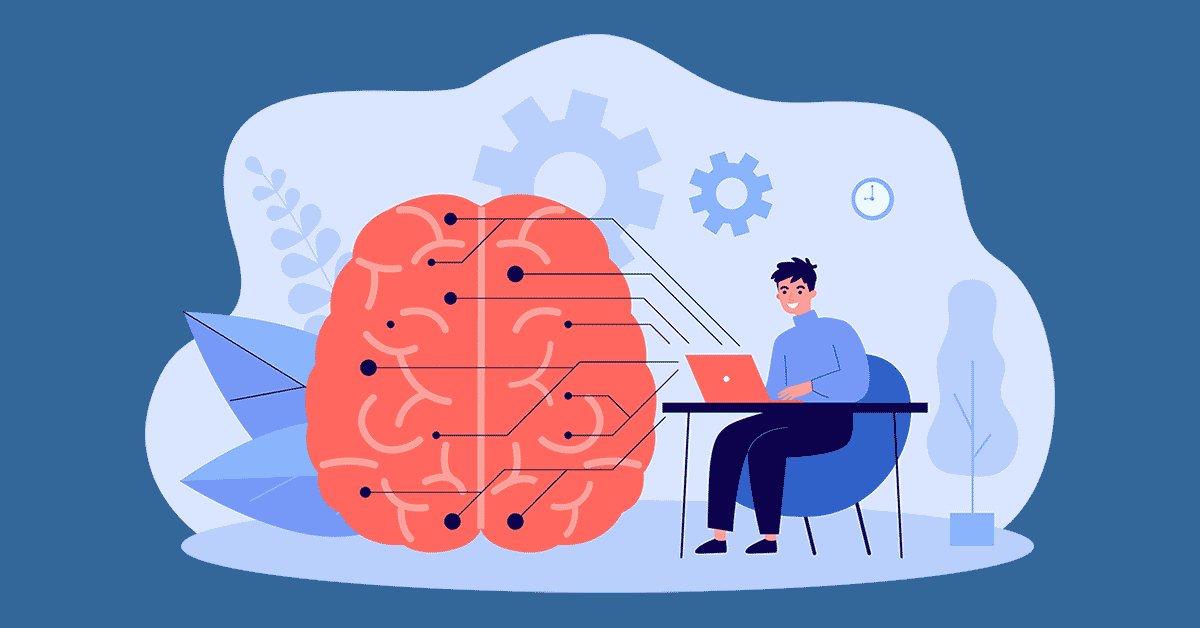
As marketers, we have access to more data today than ever before. There is so much data, in fact, that it can be hard to find the insights hiding in the numbers.
It’s one reason why more marketing teams are looking for ways to use machine learning (ML) as part of their analytics programs.
What Is Machine Learning?
Machine learning (ML) is a form of analysis where an algorithm looks for patterns in large datasets and develops a model based on the relationships it finds.
What makes a machine learning algorithm special is its ability to update its model (or learn) as it encounters more data, without additional human intervention.
Because there is so much data involved, with potentially millions of dimensions, it would be almost impossible for a human programmer to write an algorithm that could identify all the potential patterns in a dataset.
A machine learning algorithm, though, can constantly refine itself with each new piece of data it encounters.
Computers aren’t great at making intuitive leaps like human beings can, but they excel at this kind of work because they never get tired, distracted or bored.
For marketers who need to make data-driven decisions quickly, ML is a potential godsend because of its ability to find insights faster than an entire team of analysts could.
Types of Machine Learning Models
There are two main types of machine learning models: supervised and unsupervised. (Some other approaches include semi-supervised and reinforcement learning, but those are beyond the scope of this post.)
Supervised Machine Learning
With supervised machine learning, an algorithm is given “training data” — real-world data that it will use to identify patterns and create its model.
Specifically, supervised learning uses labeled data. That is, some of the variables are designated as inputs, and others are labeled as output.
The algorithm’s job is to build a model that explains how the input correlates to output.
For example, a marketing mix model might look at a company’s marketing spend (input) and the revenue it produced during a given period of time (output).
For every $1 we spend on advertising, we generate $2 in sales.
That’s a very basic example. In reality, a machine learning model would look for patterns between multiple variables, such as the amount spent on the different marketing channels in a campaign.
When we spend $1 on paid search and nothing on TV ads, we generate $3 in sales.
When we spend $1 on paid search and $2 on TV ads, we generate $15.
When we spend $2 on paid search, $1 on TV ads and $3 on direct mail, we generate $10.
… and so on. Models can incorporate other factors, too, like seasonality, weather, geography or brand reputation.
Once you know how all the inputs relate to output, you can use those patterns (aka the model) to make predictions and run test scenarios.
For example, our team built a calculator powered by a marketing mix model. It lets users predict what would happen if they used a different channel mix and different levels of budget in their next campaign. Those predictions are based on the patterns uncovered in the user’s historical marketing data.
Supervised machine learning can also power data-driven attribution models. The algorithm would try to learn how email opens, website sessions and other marketing touchpoints and the order in which they occur (for both converting and non-converting paths) correlate to conversions.
BLOG: The 5-Minute Guide to Marketing Mix Modeling
Unsupervised Machine Learning
Unsupervised machine learning doesn’t give the algorithm any labeled data, the way a supervised model would.
Unsupervised learning still looks for patterns, but it has to figure out what those are on its own. It’s more likely to discover similarities that a human analyst might overlook, because it isn’t being pointed in a specific direction with input and output labels.
Clustering is a popular example of unsupervised learning. An algorithm will group together individual pieces of data based on common characteristics that it notices.
Some marketing teams use clustering to segment their customer lists into groups that are highly similar, so they can target advertising and other messages more effectively.
Because they’re “starting from scratch,” unsupervised learning models usually require larger amounts of training data than supervised ML would.
What Marketers Should Remember About Machine Learning
While machine learning has a great deal of potential, it’s not magic. Marketers should be aware of what it can and can’t do.
For starters, machine learning is only as good as the data it runs on. Many marketing models require at least 24 months of data in order to produce reasonably accurate predictions. (That’s another fact about models — there’s no perfectly accurate model, just models that are useful for making decisions.)
If a model’s data isn’t representative of the problem you’re trying to solve, the resulting model might not be able to make useful predictions.
In addition to training data, you’ll need testing data when developing a machine learning model. Testing data is usually part of the original data collected for a training dataset, but it’s held back and used to assess whether the finished model’s predictions are accurate.
You Don’t Have to Be a Data Scientist to Use Data Science
Alight’s attribution and predictive dashboards — powered by machine learning models — make advanced insight available to any marketer. Request your demo today!

